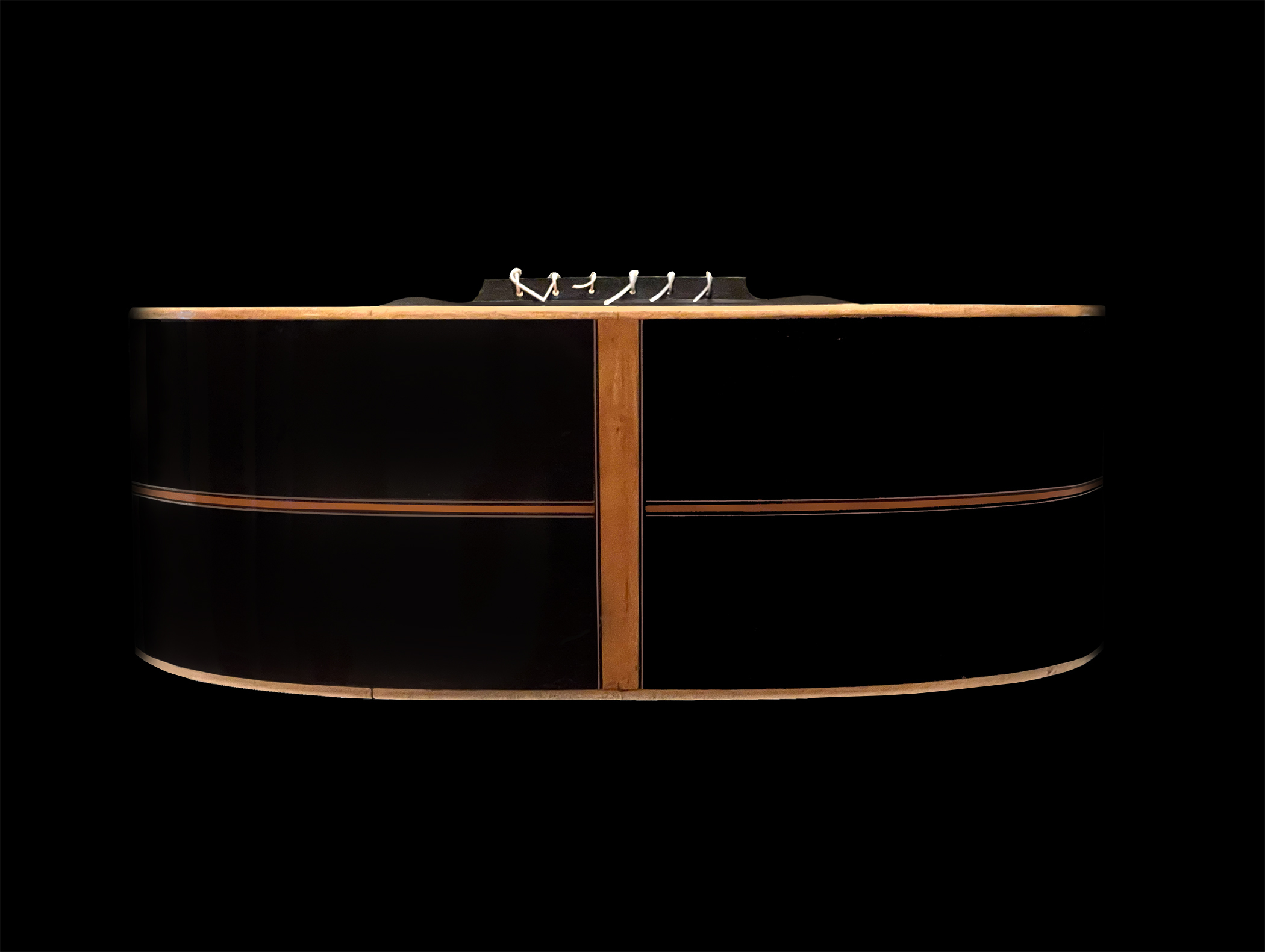Cousins Richard and William Davis opened their luthier workshop in 1822 on Coventry Street in London’s West End. Their quaint storefront, with double bow-fronted windows and the royal coat-of-arms over the door, was very different from the building that stands there today with its assorted curio shops catering to tourists. Their elaborate guitar labels depicting the lion and the unicorn announced: “Violoncello, & Bow Makers to His Majesty, the Duke of Cambridge” (William IV). Tucked away toward the top, they added: “Piano Fortes & all kinds of Musical Instruments for Sale & Hire. Spanish Guitars on a new and improved principle.”
| Specifications | |
| Date | 1831 |
| Location | London, England |
| Length of Guitar | 930mm |
| String Length | 627mm |
| Upper Bout Width | 250mm |
| Waist Width | 185mm |
| Lower Bout Width | 315mm |
| Side Depth at Waist | 88mm |
| Soundboard: Spruce | Back: Brazilian rosewood | Sides: Brazilian rosewood | Details: Materials and ornate tuners portray a typical Mirecourt design. | |


R. & W. Davis was primarily a London dealer, who generally contracted to have instruments built offsite, but occasionally had guitars made on the premises by journeymen luthiers. One such journeyman was Joseph Gérard (c. 1806–1844). Gérard was a favorite maker of the acclaimed British guitar virtuoso, composer, and tutor Josephina Pelzer, later known through marriage as Madame Pratten.
There is evidence to suggest that Gérard arrived in London in 1831 to build guitars in the Davis workshop, as one extant guitar labeled by Davis is signed under the soundboard “Joseph Gérard/á Londres/1831.” Although Gérard claimed he was from Paris, he probably was born and worked in Mirecourt. It was fashionable at the time for French émigrés to embellish their resumes by claiming they worked in the capital.
The 1830s R. & W. Davis guitar in the Austin-Marie Collection looks nearly identical to one signed by Gérard, held in the Royal College of Music collection in London, and is likely one of his instruments. With its back and sides made of Brazilian rosewood, topped with an ornate headstock, it portrays a typical Mirecourt design.
R. & W. Davis did business into the next decade, before selling their firm in 1846 to violin maker Edward Withers.